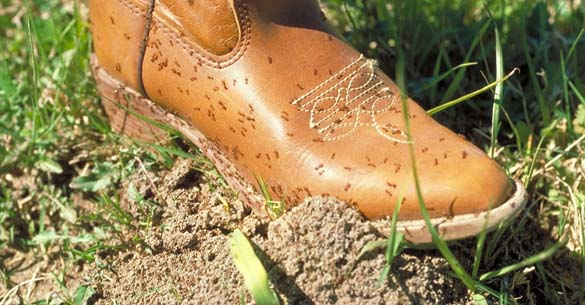Invasives: Combating Fire Ants
This is Passport to Texas
[NS: fire ant stridulations]
That’s the sound of the imported red fire ant. A sad truth: they’re most active outdoors during nice weather.
08—We typically see most activity in the spring and in the fall. It’s nice, and that’s generally when we like being outside, too, unfortunately.
Elizabeth “Wizzie” Brown, an entomologist with AgriLife Extension, says the insect—native to South America—found its way into the U.S. in the 1930s through the port of Mobile, Alabama; perhaps in soil used for ships’ ballasts. We discovered them in Texas in the 1950s.
Brown says researchers continue to work on ways to manage this invasive exotic pest.
29—We have had things that we’re working on…things like fungus, and there’s organisms that live in the fire ant body that reduce the reproductive capabilities of the fire ants. They have brought in parasitizing flies, that are called phorid flies that they use that attack the fire ants and pretty much eat them from the inside out. So we are working on it, but the fire ants are here—they’re always going to be here; these are just tools in our tool belts to help up manage those populations.
Tomorrow Wizzie Brown tests a home remedy to control fire ants. Find out if it works.
That’s our show… For Texas Parks and Wildlife…I’m Cecilia Nasti.



 Passport to Texas is a
Passport to Texas is a  Passport to Texas is made available by:
Passport to Texas is made available by: